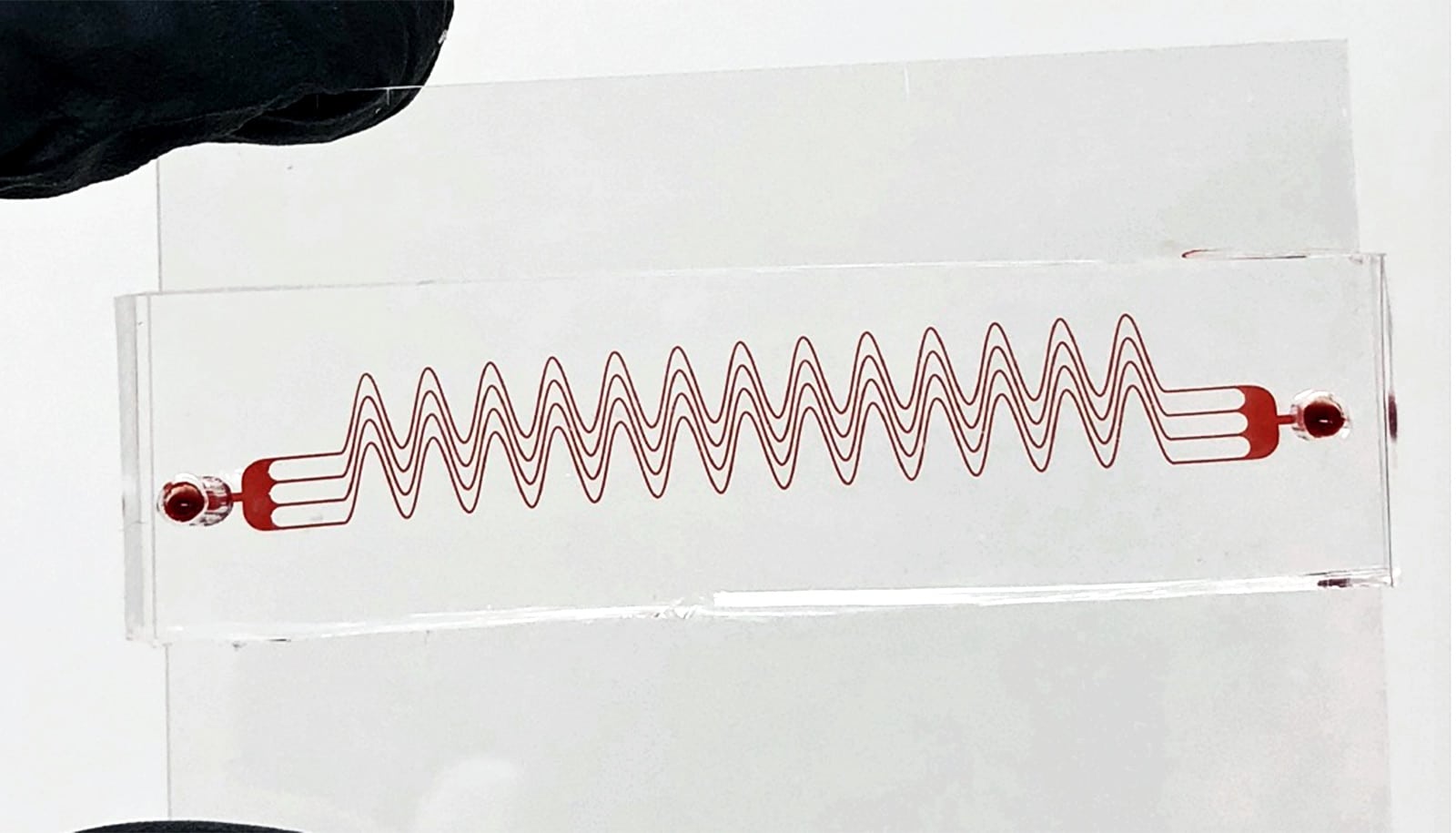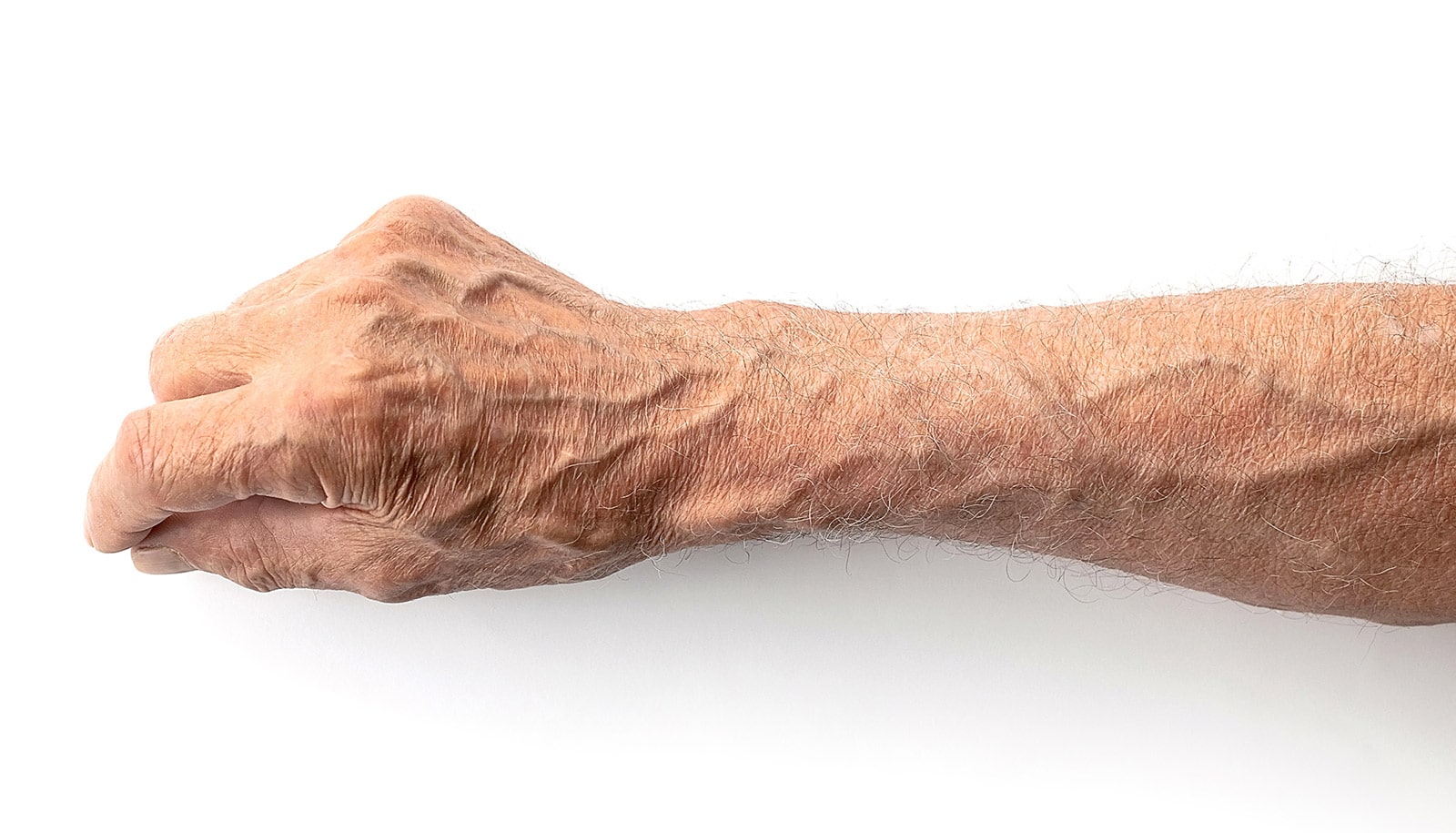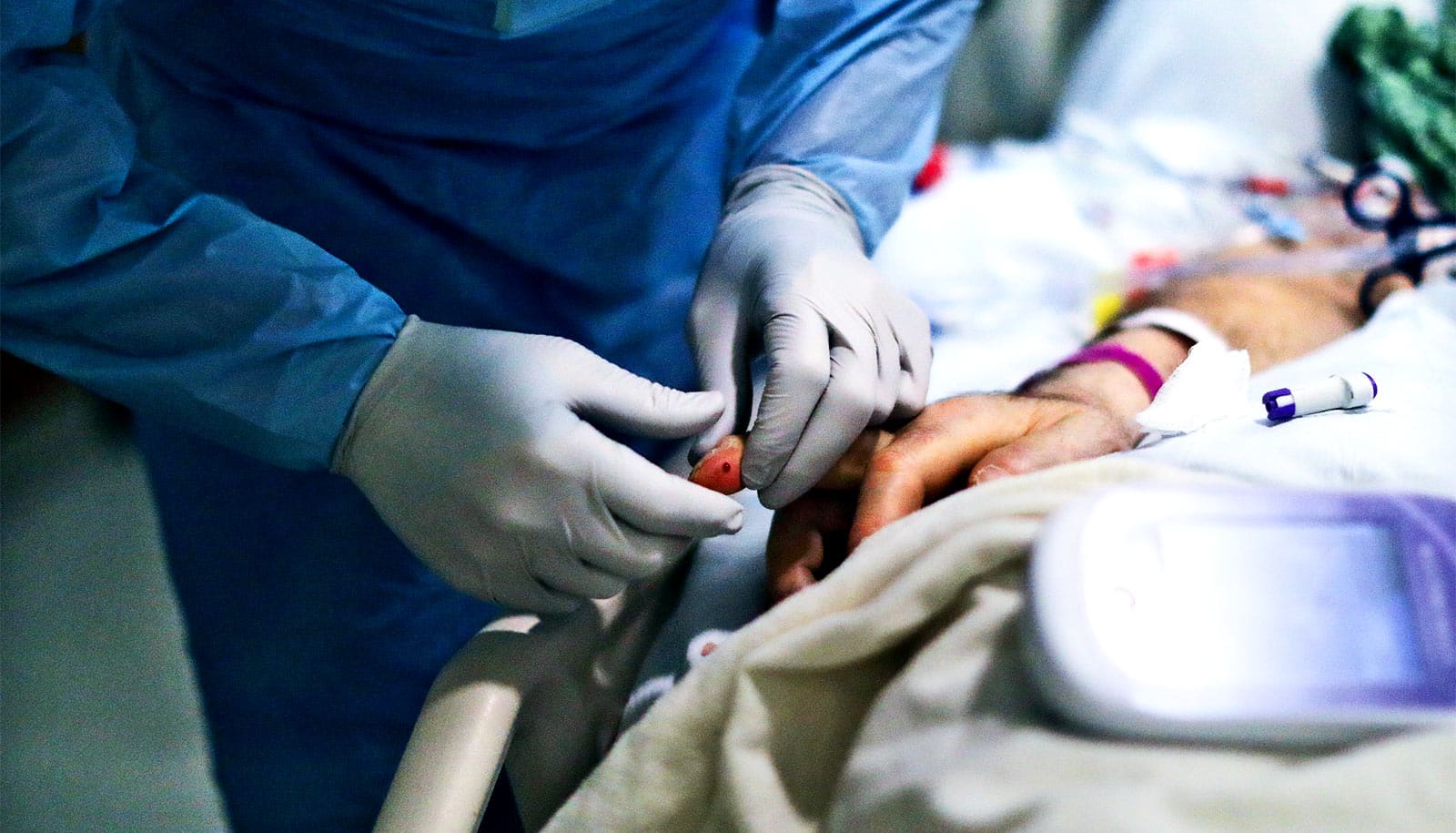
The microfluidic device researchers developed to help detect blood clots. (Credit:Texas A&M)
Device offers new way to detect blood clots
A new medical device could offer a better way to detect blood clots, especially in children, researchers say.
A new device offers a better way to detect blood clots, especially in pediatric patients, researchers report.
Unlike what a biology textbook may show, blood vessels are not straight cylinders. They are tortuous, meaning they have complex curves, spirals, and bends. When the blood reaches these curves, it makes changes to its fluid mechanics and interactions with the vessel wall.
In a healthy person, these changes are in harmony with the tortuous microenvironment, but when diseased, these environments can lead to complex flow conditions that activate proteins and cells that eventually lead to blood clots.
The fact that medical devices used to detect clots and assess anti-blood clotting drug effects are entirely chemistry-based poses a challenge, says Abhishek Jain, assistant professor of biomedical engineering at Texas A&M University.
“They do not incorporate the flow through the naturally turning and twisting blood vessels, which are physical regulators of blood clotting,” Jain says. “Therefore, the readouts from these current static systems are not highly predictive, and often result in false positives or false negatives.”
Mimicking ‘tortuous’ vessels to find blood clots
To approach the problem from a new angle, researchers in Jain’s lab designed a microdevice that mimics tortuous blood vessels and created a diseased microenvironment in which blood may rapidly clot under flow. They showed this biomimetic blood clotting device could help to design and monitor drugs given to patients who have clotting disorders.
Jain says he can see several applications for the device, including critical care units and military trauma care units.
“It can be used in detection of clotting disorders and used in precision medicine where you would want to monitor pro-thrombotic or anti-thrombotic therapies and optimize the therapeutic approach,” he says.
After developing the device, the team took it into the field for a pilot study. Working with Jun Teruya, chief of transfusion medicine at Texas Children’s Hospital and Baylor College of Medicine, the team coordinated with clinicians to test the device with pediatric patients in critical care whose heart and lungs were not working properly.
These patients needed an extracorporeal membrane oxygenation (ECMO) machine, which provides cardiac and respiratory support in exchange of oxygen and carbon dioxide.
A common complication in ECMO is blood clotting, so patients receive anticoagulants to prevent clotting. However, ECMO machines may also “eat” clotting proteins and platelets, which puts anticoagulated patients in further risk of bleeding. Anticoagulated pediatric patients on ECMO are especially prone to bleeding.
Quick, reliable results
Current chemically based blood clotting tests are expensive, time-consuming, can be unreliable, and require a skilled technician. Jain’s team’s tortuosity-based microfluidic system doesn’t require expensive chemicals, is quick, with results within 10-15 minutes, uses low blood sample volume, and is easy to operate.
“The margin for error is essentially zero for these patients,” Jain says. “Therefore, it’s imperative that all the tests, not just clotting tests, must work and provide clinicians with quick and reliable information about their patient so they can provide the best care possible.”
Having the opportunity to test their system with real patients allowed Jain and his team to demonstrate that their design can detect bleeding in anticoagulated patients with low platelet counts, which can help guide doctors to make better evidence-based clinical decisions for their patients.
As a next step, the researchers will continue clinical studies to compare their approach to standard methods and hopefully demonstrate key performance advantages.
The study appears in the journal Scientific Reports .
The National Institute of Biomedical Imaging and Bioengineering of the National Institutes of Health, the Texas A&M Engineering Experiment Station, and Baylor College of Medicine funded the work.
Source: Texas A&M University
The post Device offers new way to detect blood clots appeared first on Futurity .
Share this article:
This article uses material from the Futurity article, and is licenced under a CC BY-SA 4.0 International License. Images, videos and audio are available under their respective licenses.
Related Articles:
Case study: COVID-19 brought on blood clots in arm
May 18, 2021 • futurityThicker blood may explain odd COVID-19 blood clots
June 8, 2020 • futurityLinks/images:
- https://www.futurity.org/bandage-blood-clotting-superhydrophobic-materials-2252422-2/
- https://www.futurity.org/blood-clotting-factor-viii-1039832-2/
- https://www.futurity.org/warfarin-anticoagulants-stroke-1309952-2/
- https://doi.org/10.1038/s41598-020-62768-4
- https://today.tamu.edu/2020/05/19/researchers-find-new-way-to-detect-blood-clots/
- https://www.futurity.org/blood-clots-microfluidic-device-2371002-2/
- https://www.futurity.org


